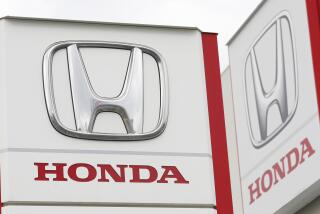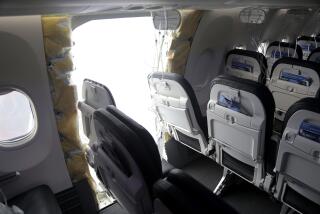Tail Checks Ordered on All Japanese Airlines’ 747s
- Share via
TOKYO — The Transport Ministry today ordered inspection of the tail section of all Boeing 747s flown by Japanese airlines because of evidence that a tail-end failure caused a jumbo jet to slam into a mountain, killing 520 people.
Preliminary evidence in a joint U.S.-Japanese probe of Monday’s crash of a Japan Air Lines jet, the worst single-plane crash in history, indicated that it was caused by a structural failure in the tail section, the ministry said.
“The circumstances (of the crash) seem to indicate that the damage to the vertical stabilizer and the rudders might be the starting point of the accident,” it said.
Three pieces of the tail section were found in Sagami Bay outside Tokyo, indicating that they had come off the plane well before the crash.
A spokesman for Japan Air Lines, whose fleet of 48 jumbo jets is the largest in the world, said the order would not disrupt service. He refused additional comment.
The government owns 34.9% of the airline.
Other Airlines Affected
The ministry’s order also applies to 21 Boeing 747 passenger and cargo jets flown by three other Japanese carriers--All Nippon Airways, Japan Asian Airways, a JAL subsidiary, and Nippon Cargo Airlines.
The ministry said “visual” and “non-destructive” inspections of the planes’ vertical stabilizers and rudders, including the tail fin-to-fuselage attachment, would begin today.
The inspections are to be conducted within the next 100 flight hours of all 747s with more than 15,000 takeoff-landing cycles and within 300 flight hours for those with fewer than 15,000 cycles.
Boeing officials called the decision premature.
In Seattle, a Boeing spokesman called the inspection order “a prudent move on the part of the Japanese. They don’t know what happened and so they should take every step they can that is intelligent and prudent to determine the cause. We don’t know anything more than what the (Japanese Transportation) ministry has said.”
Boeing issued warnings in 1983 that aging 747s should be inspected for cracks.
More to Read
Sign up for Essential California
The most important California stories and recommendations in your inbox every morning.
You may occasionally receive promotional content from the Los Angeles Times.










